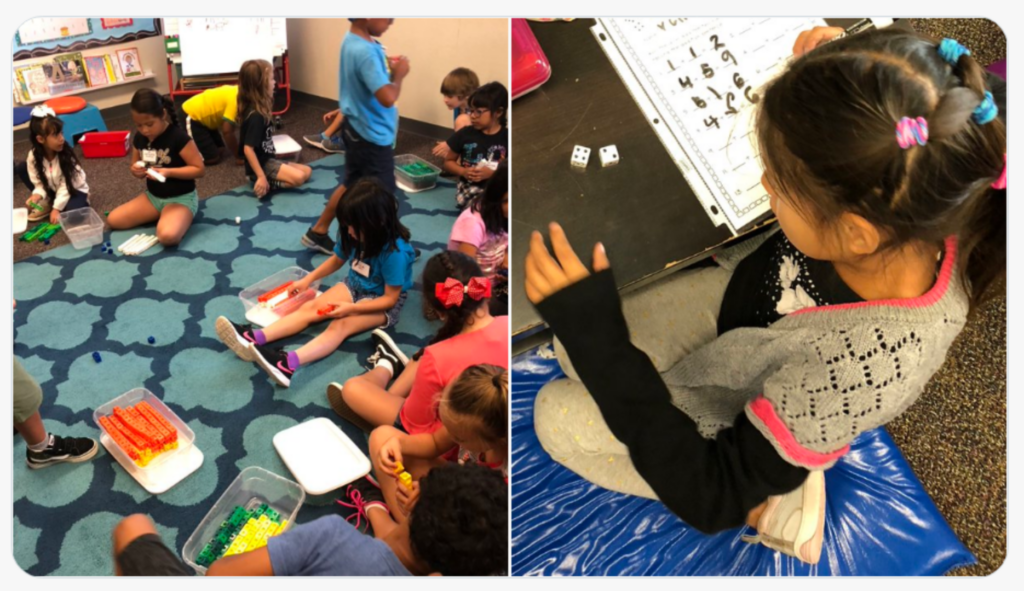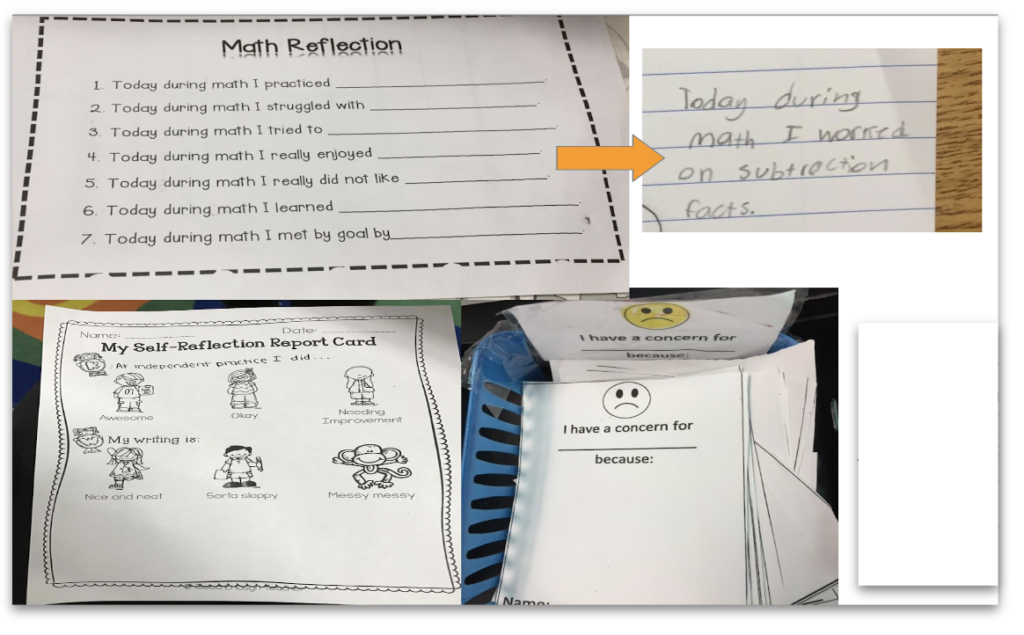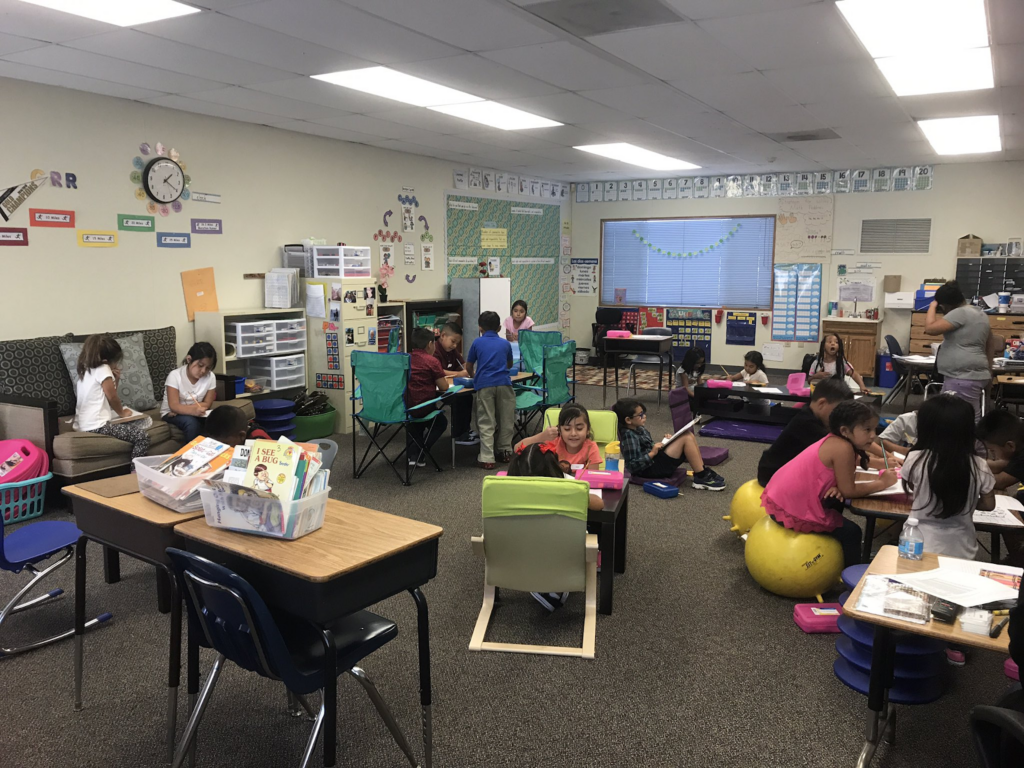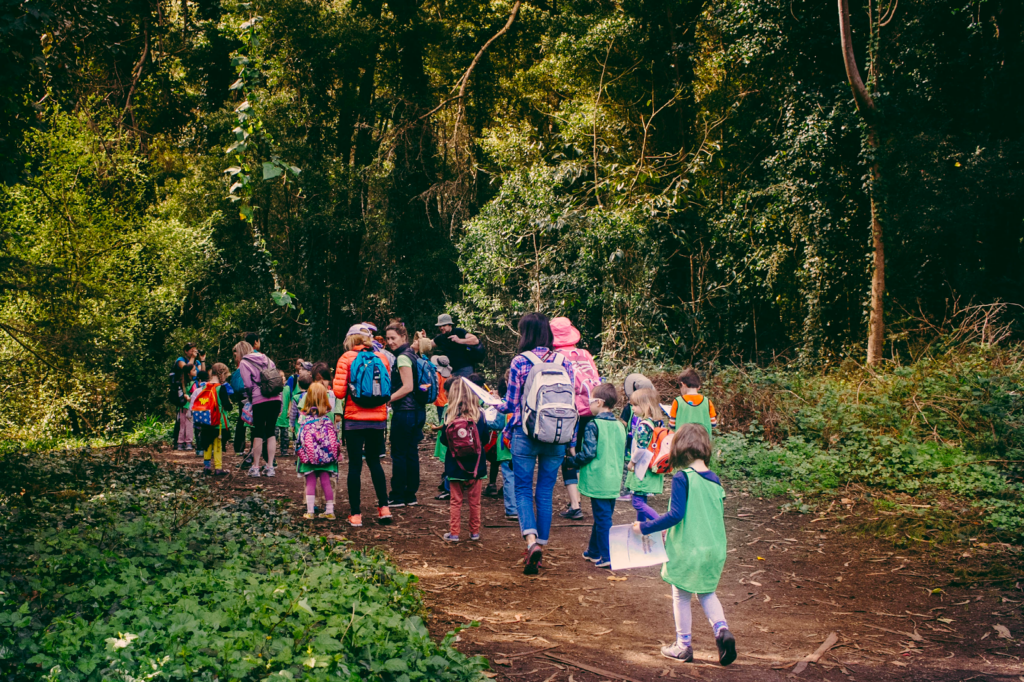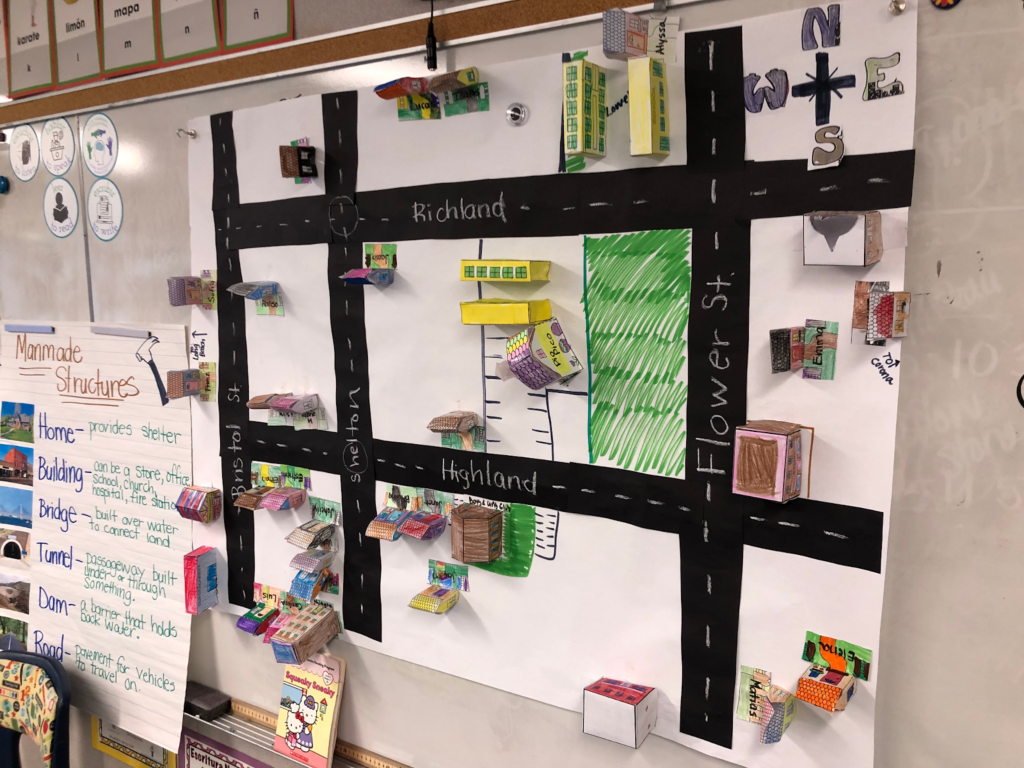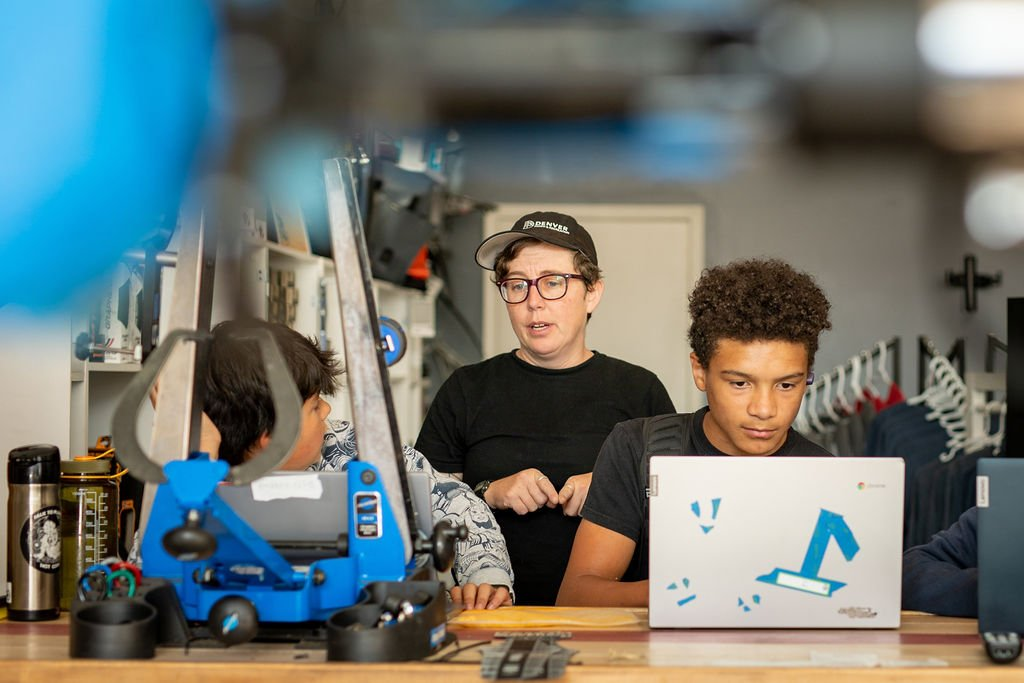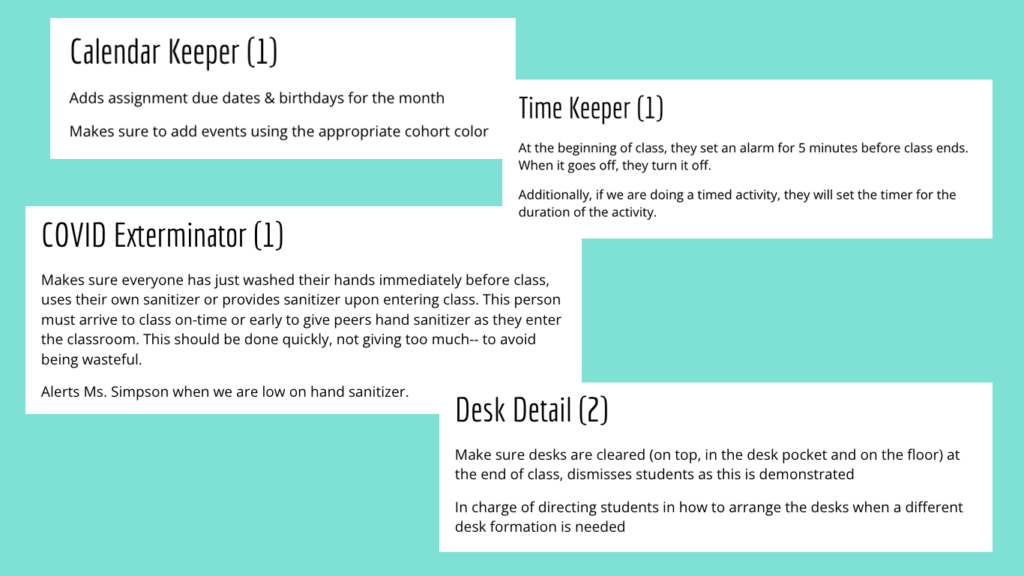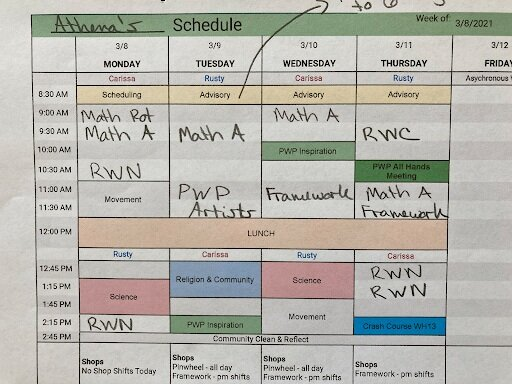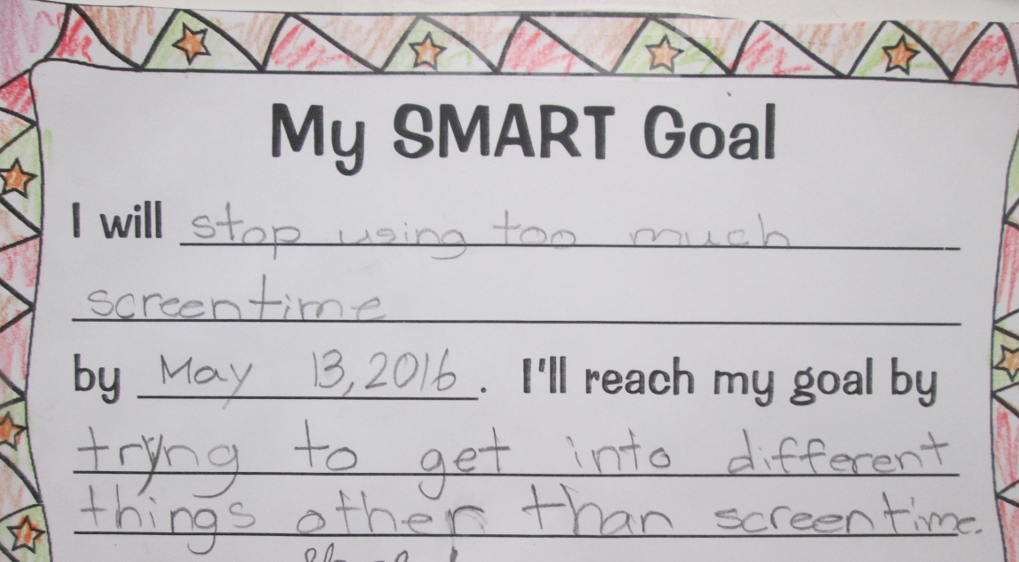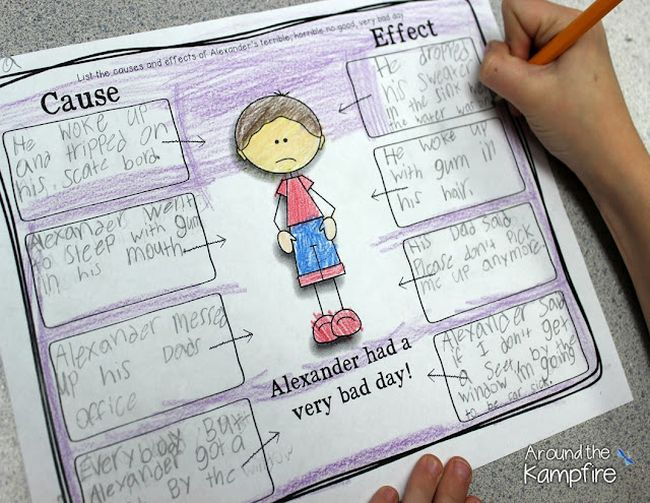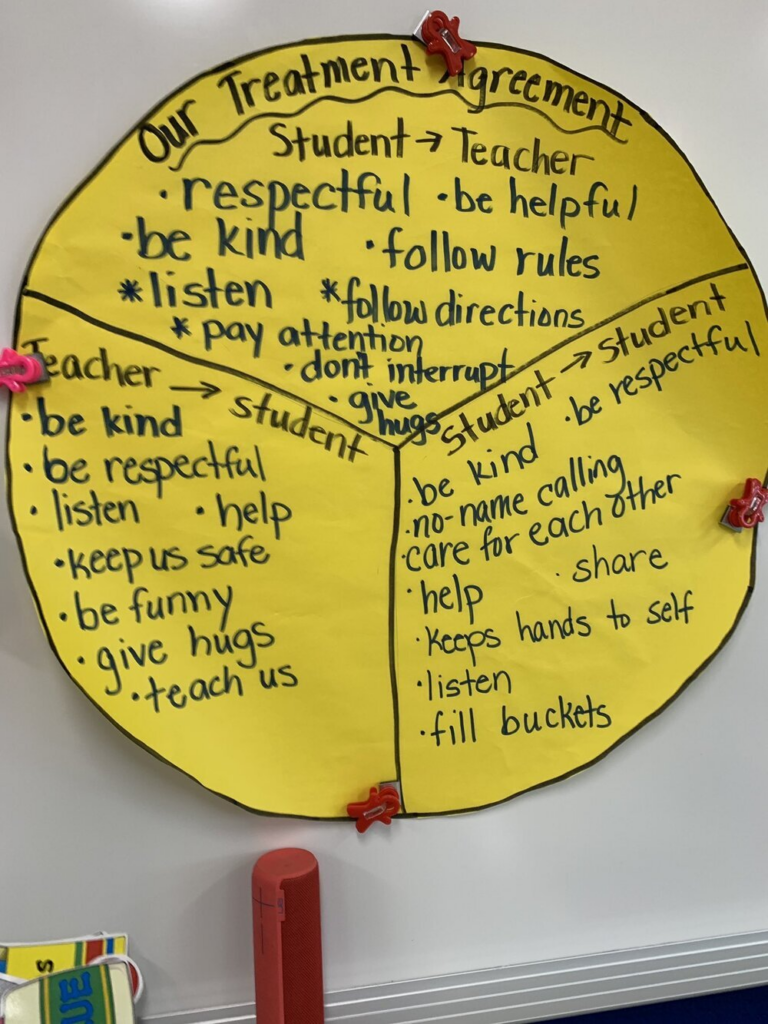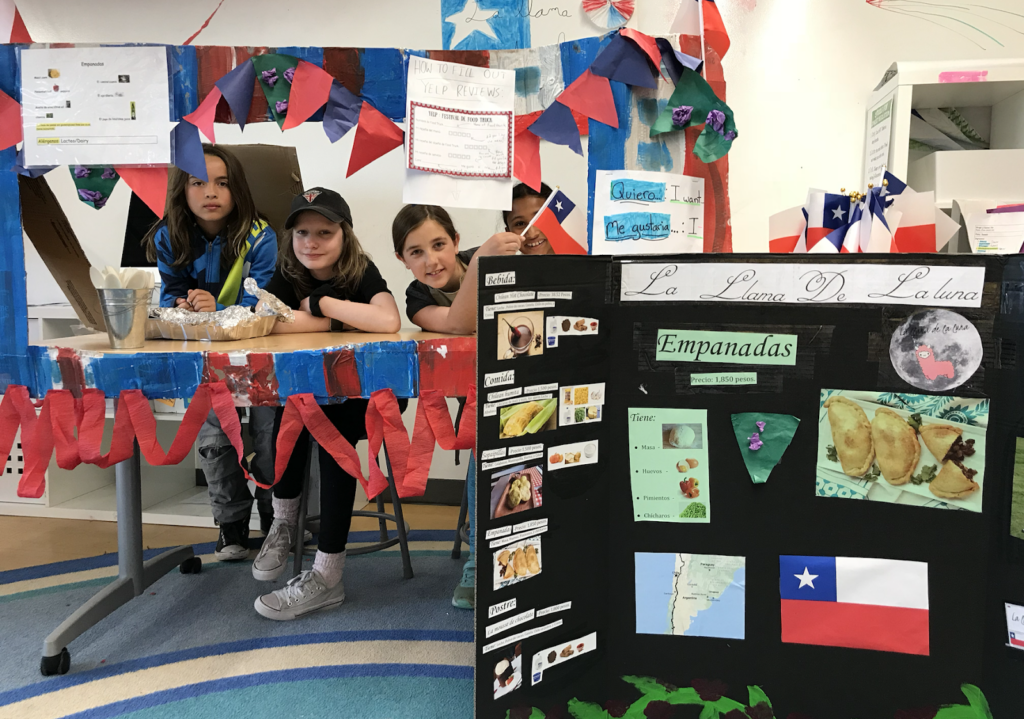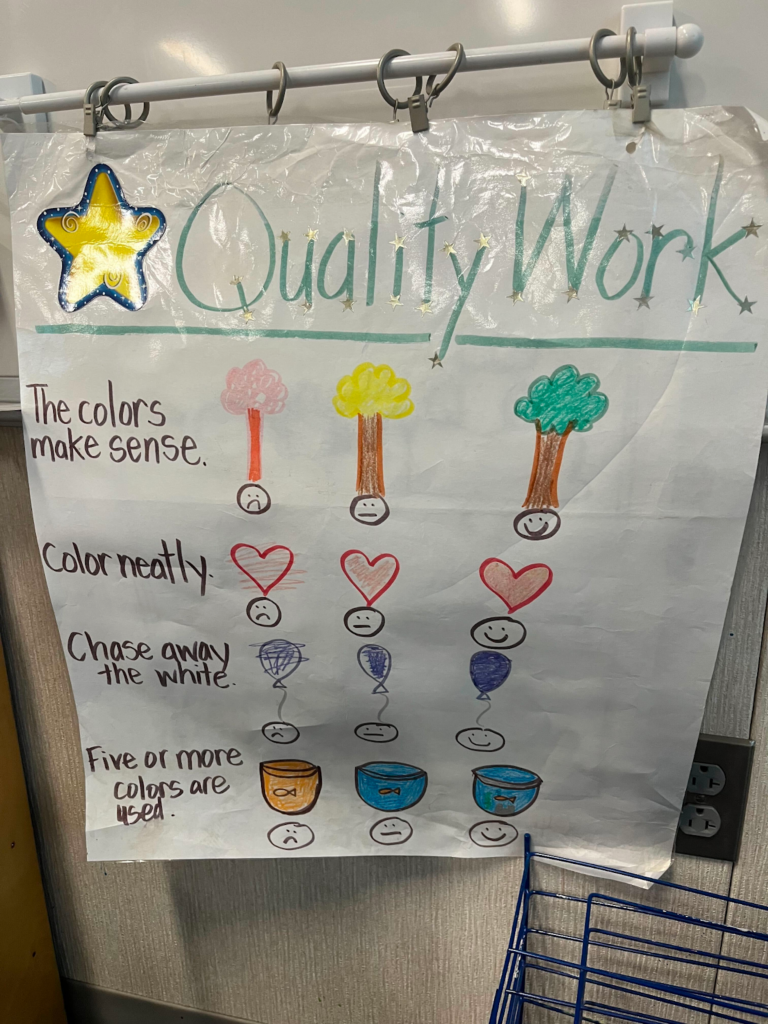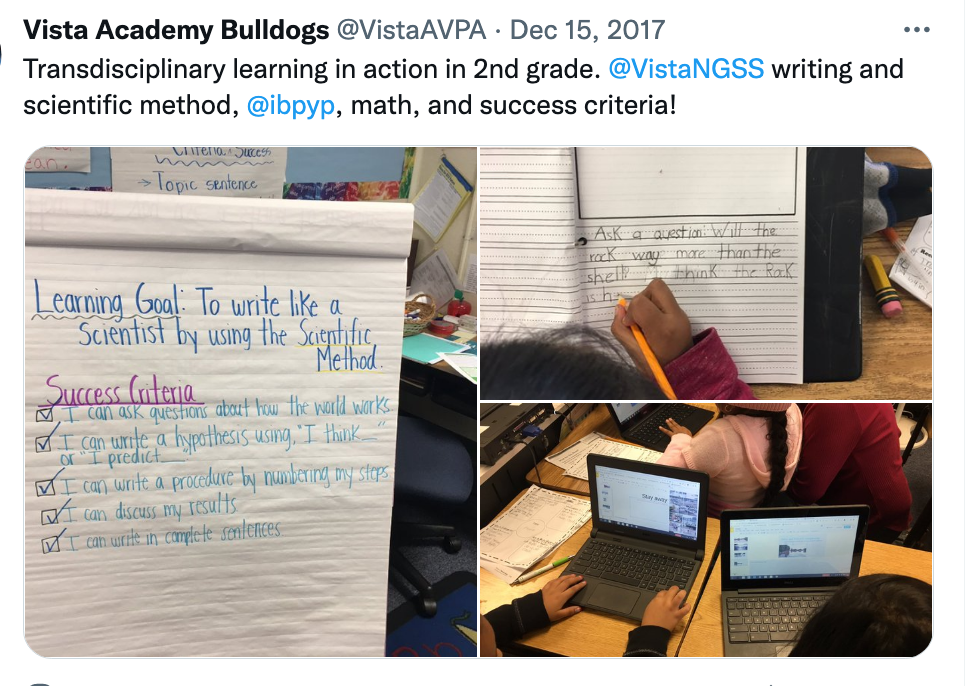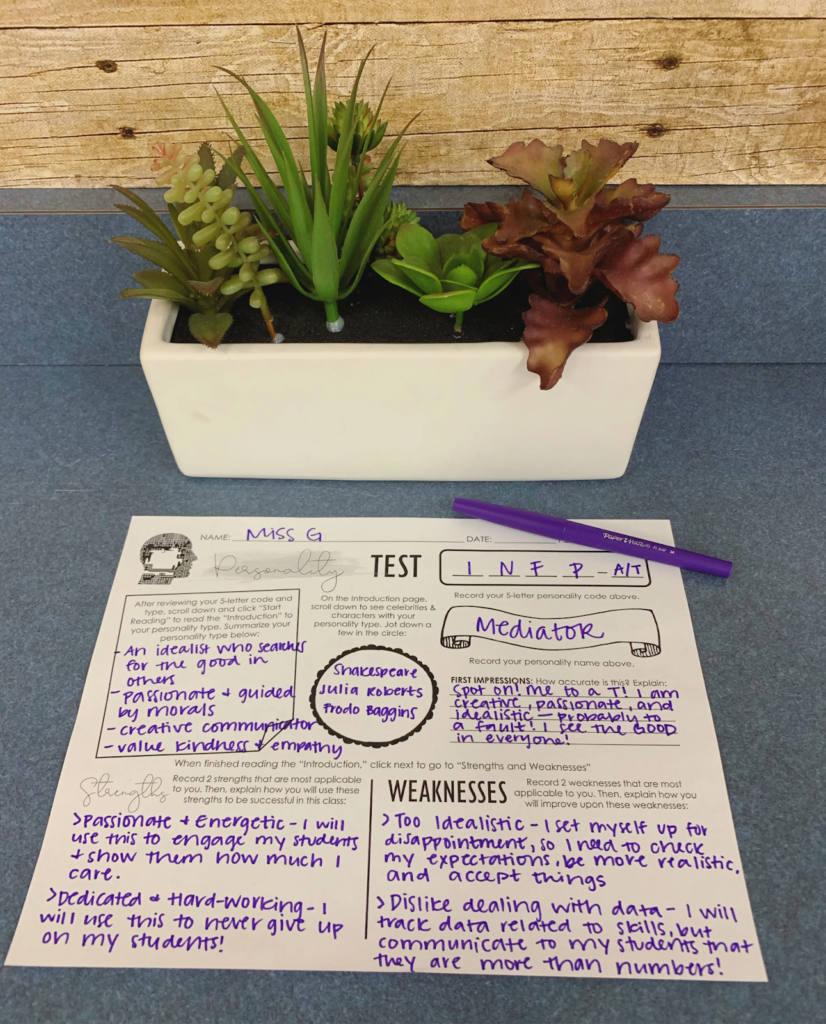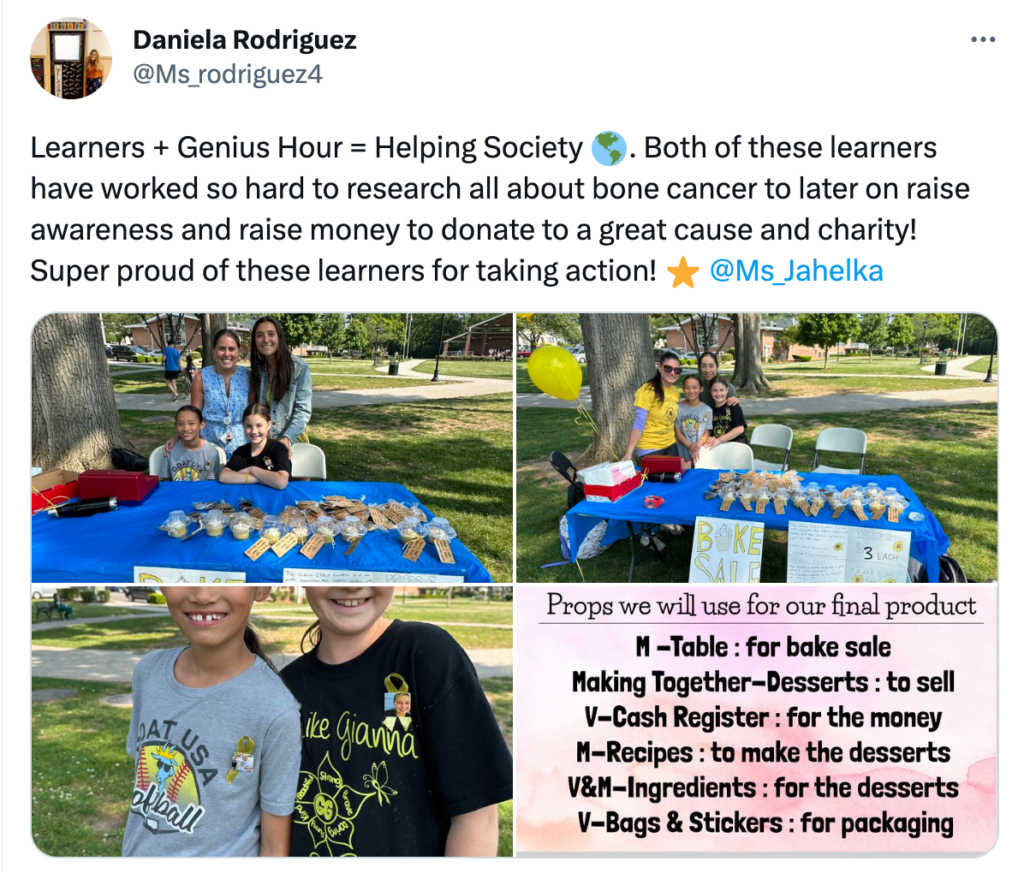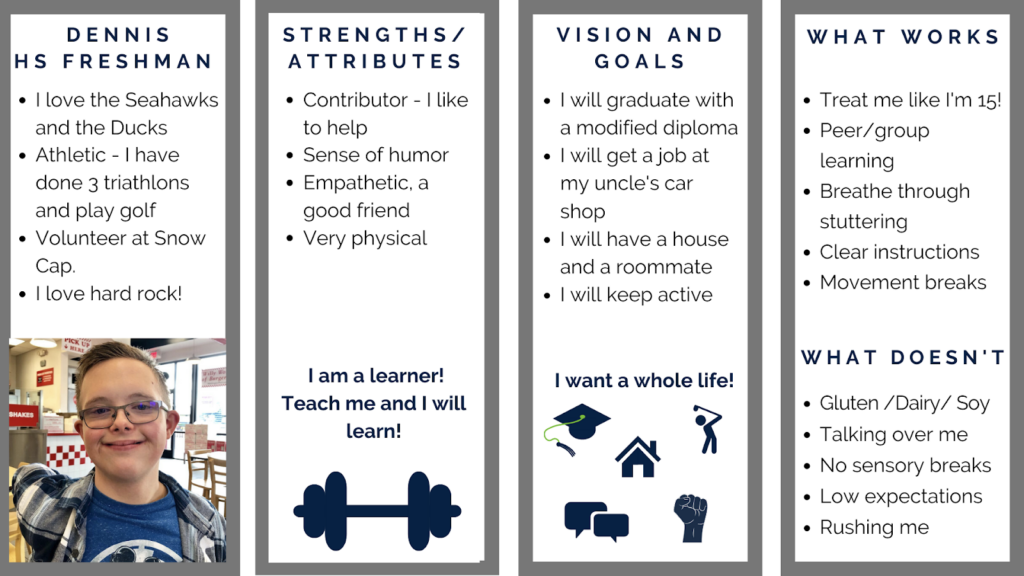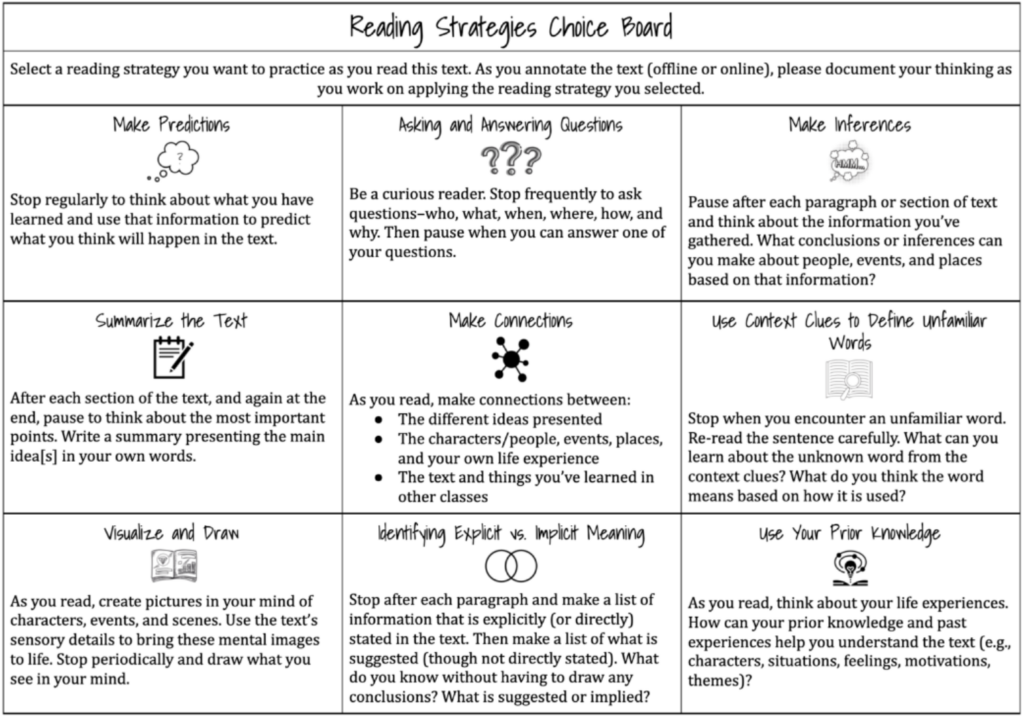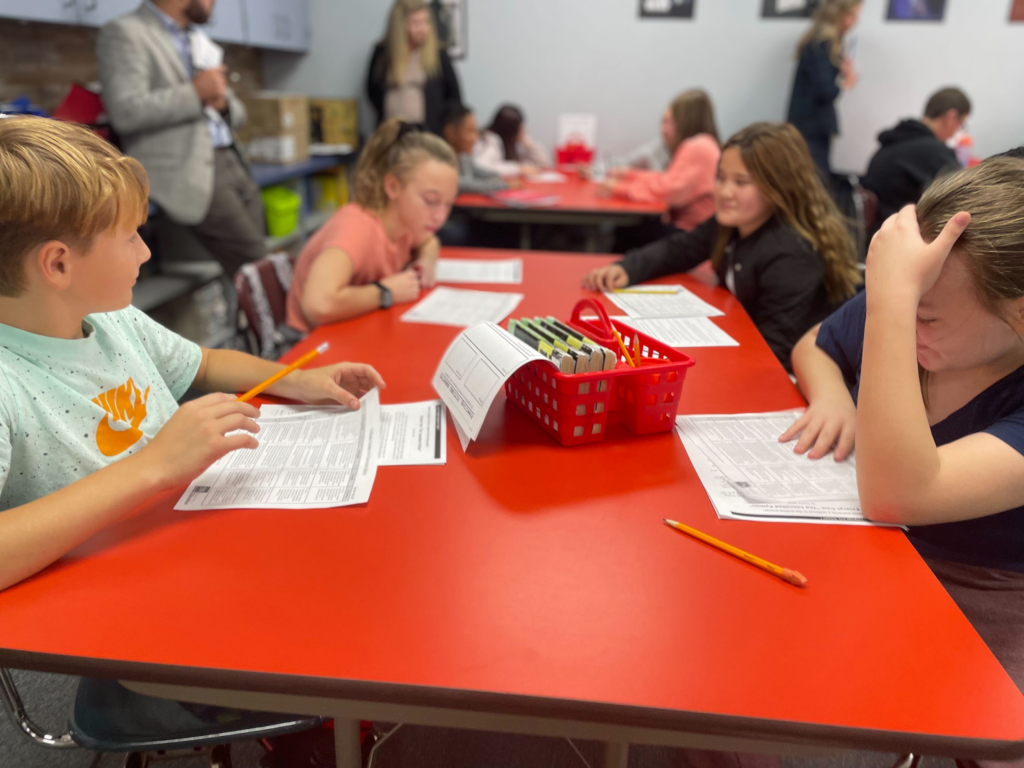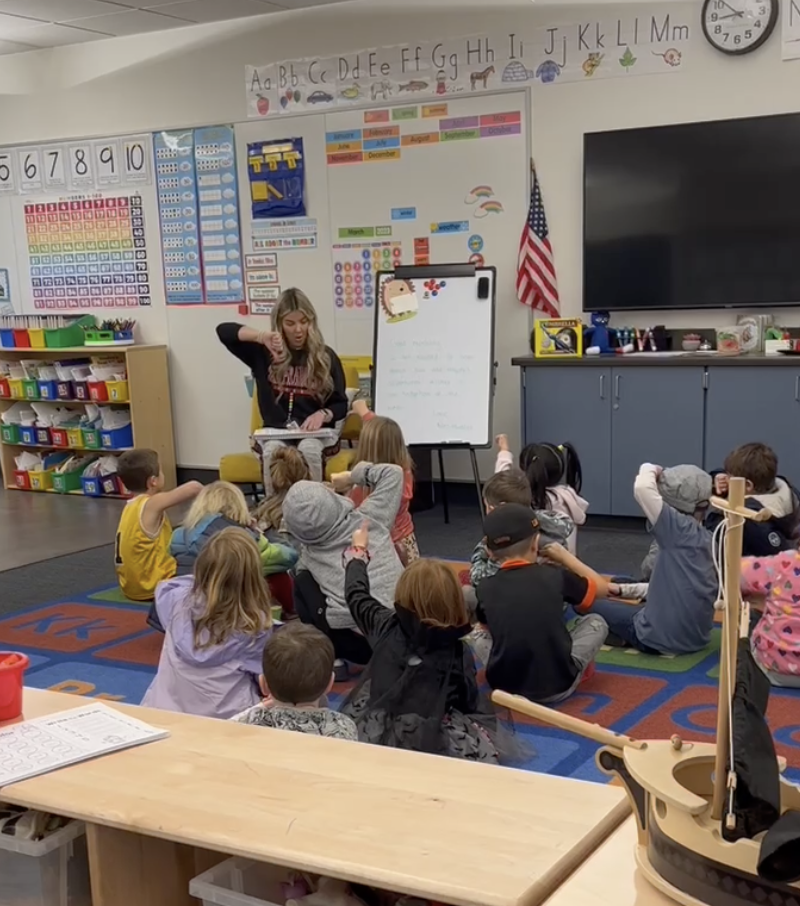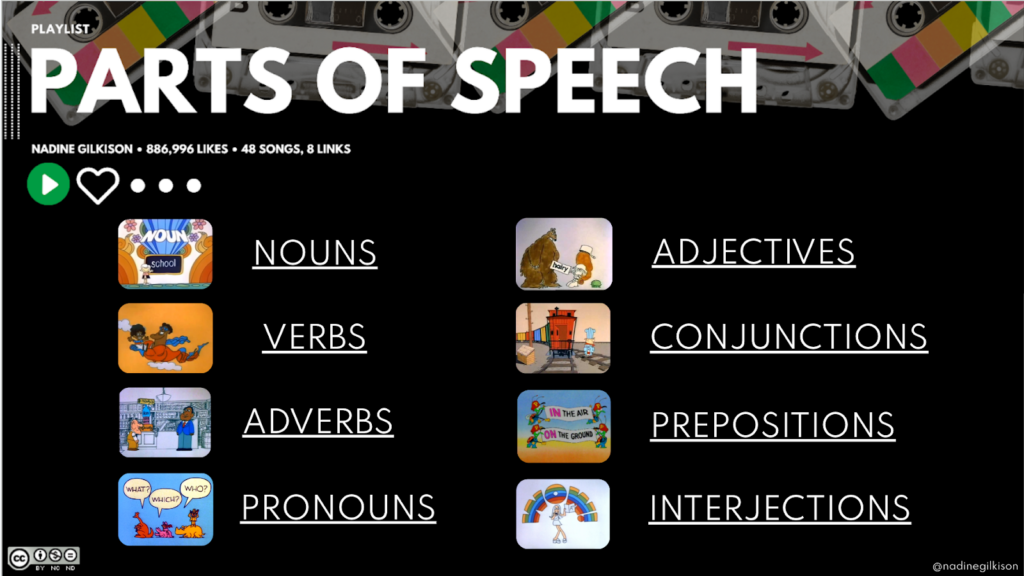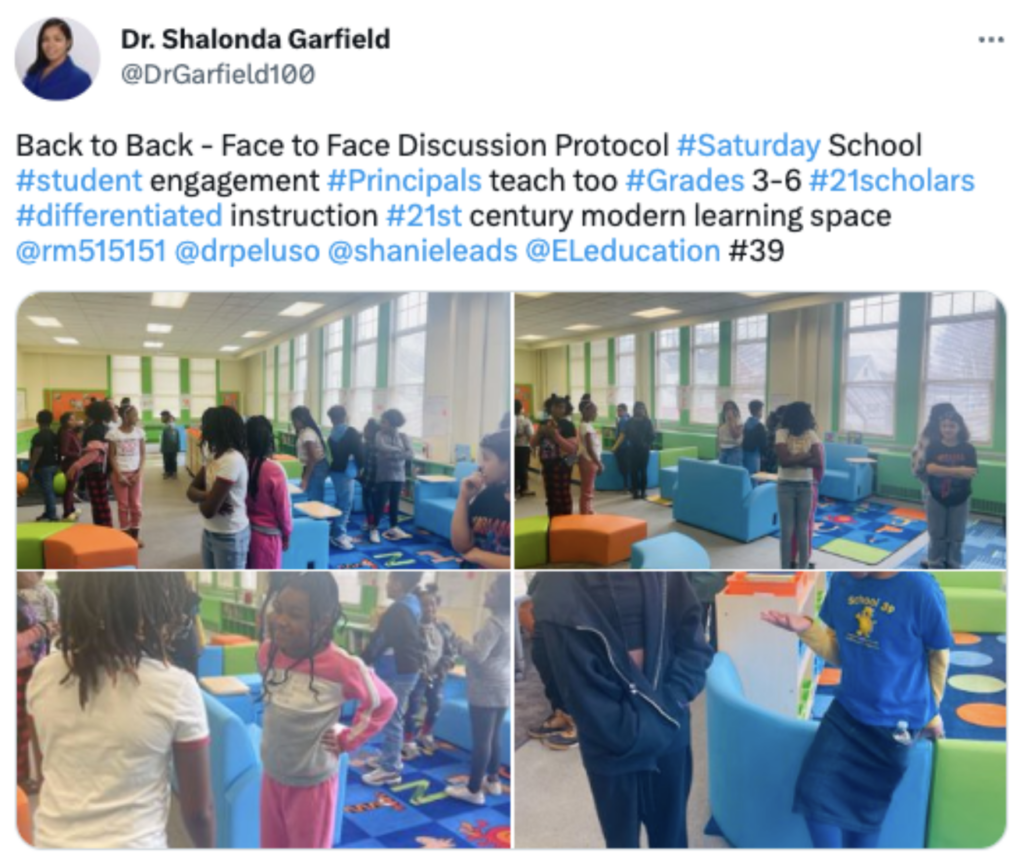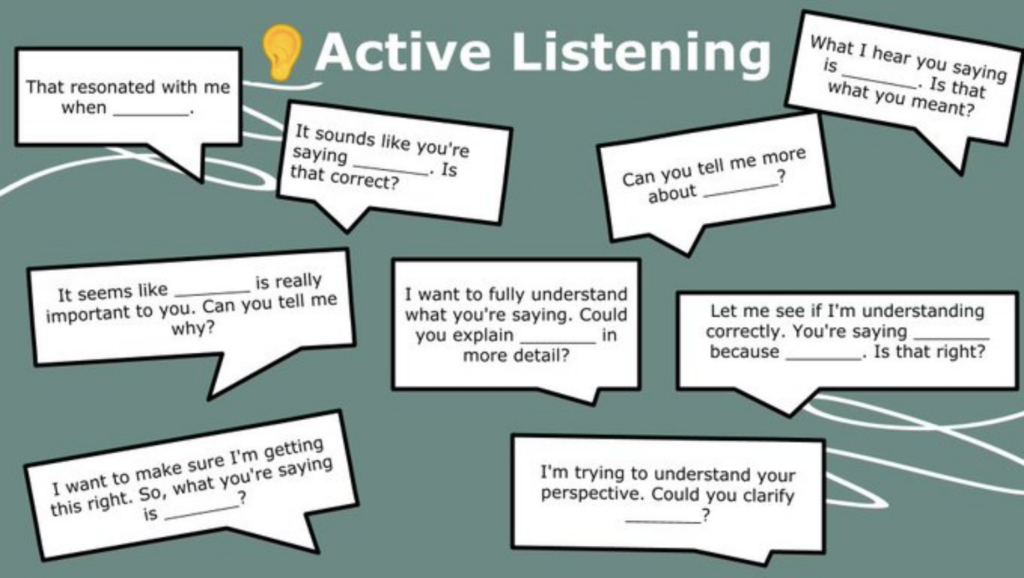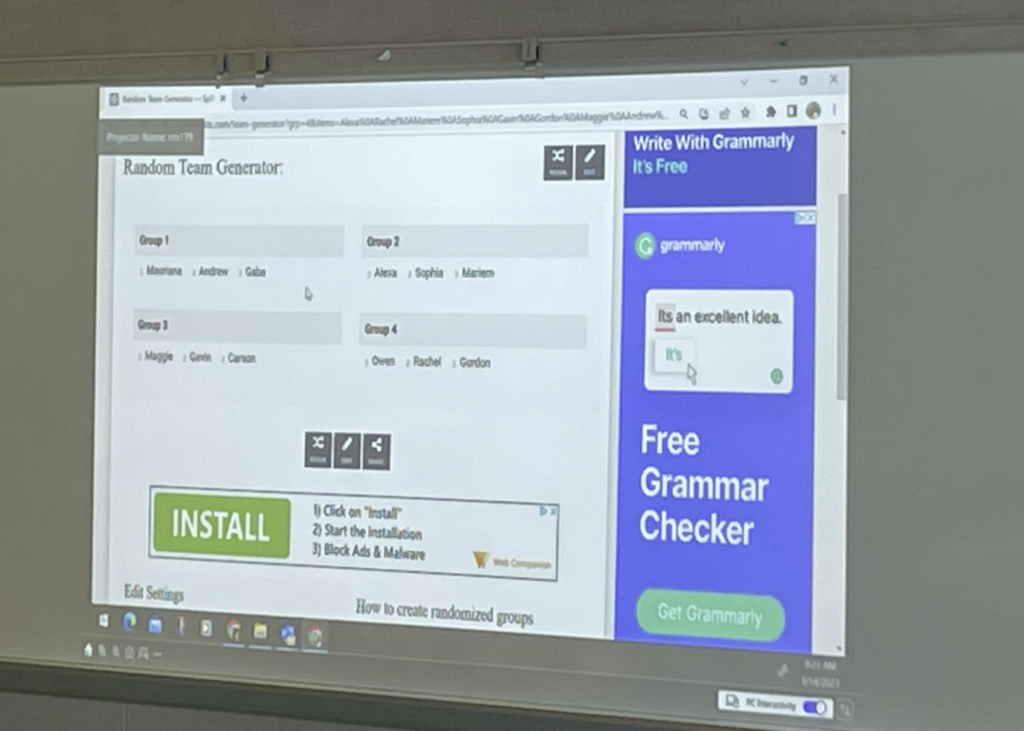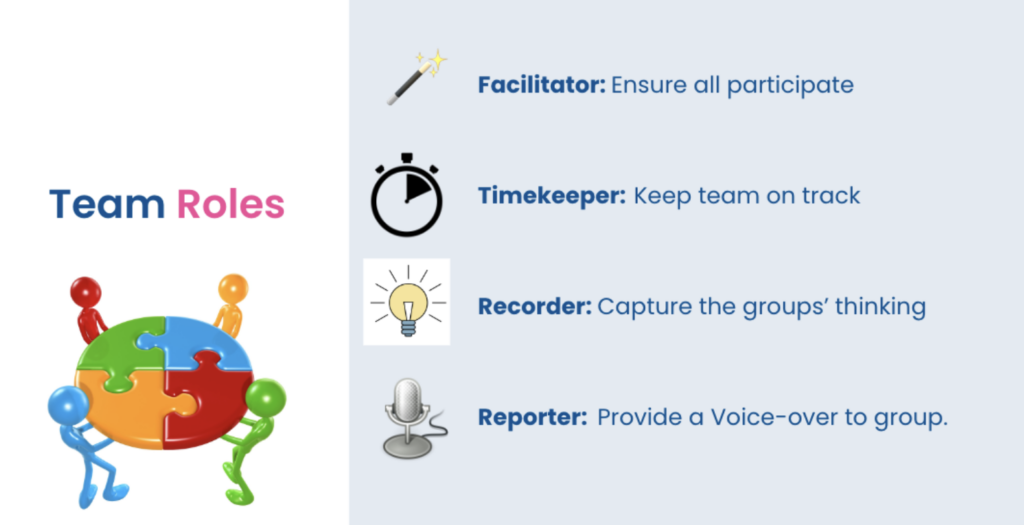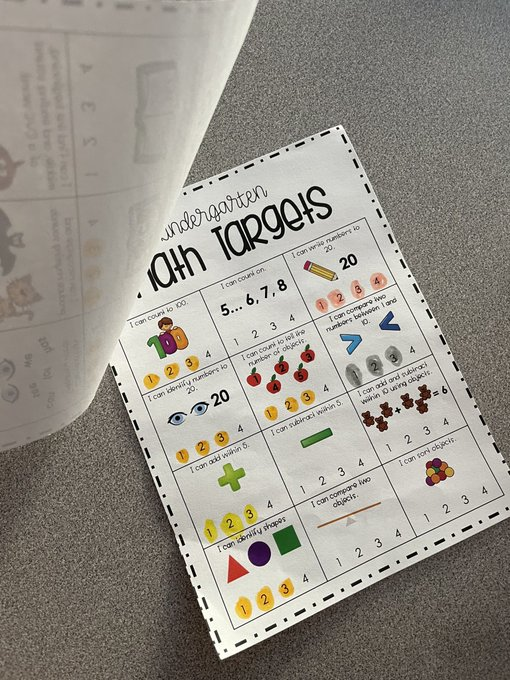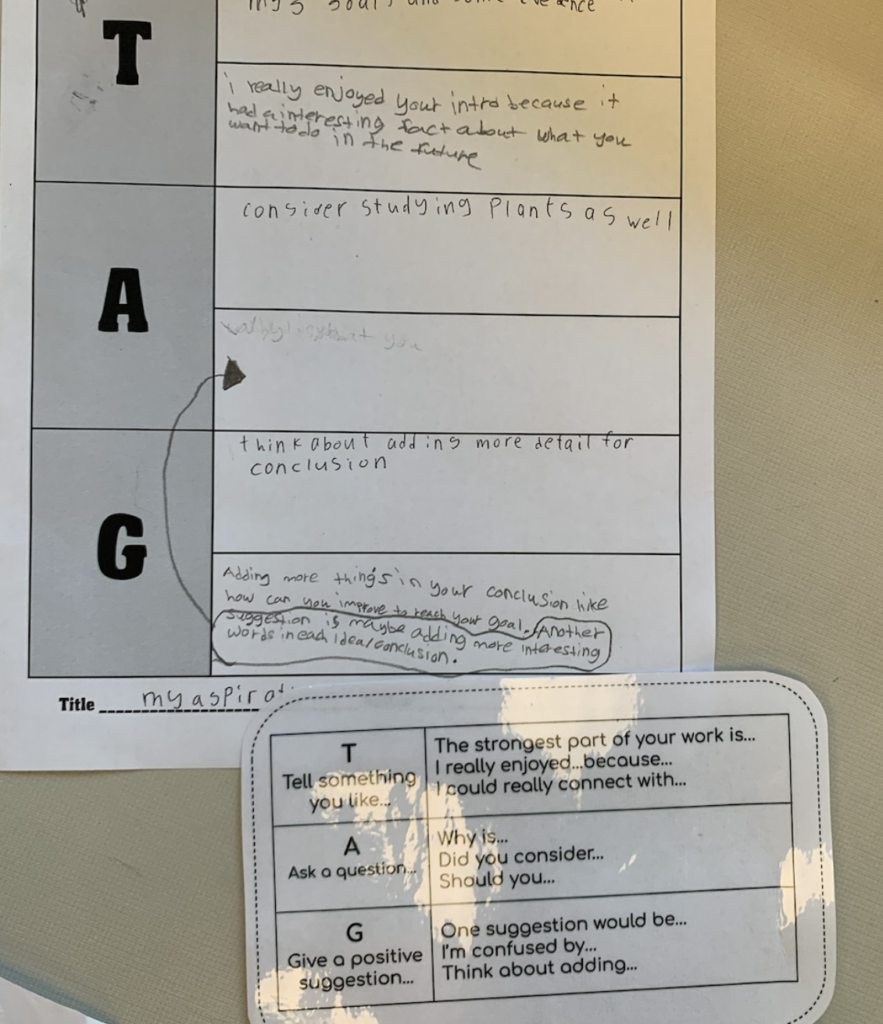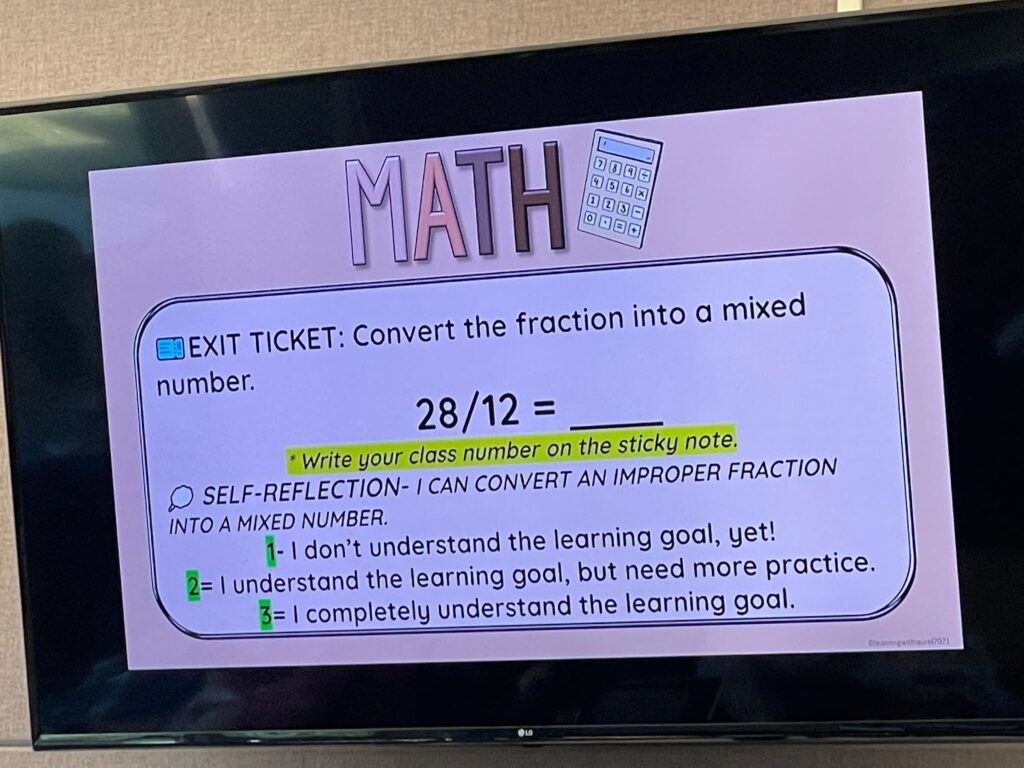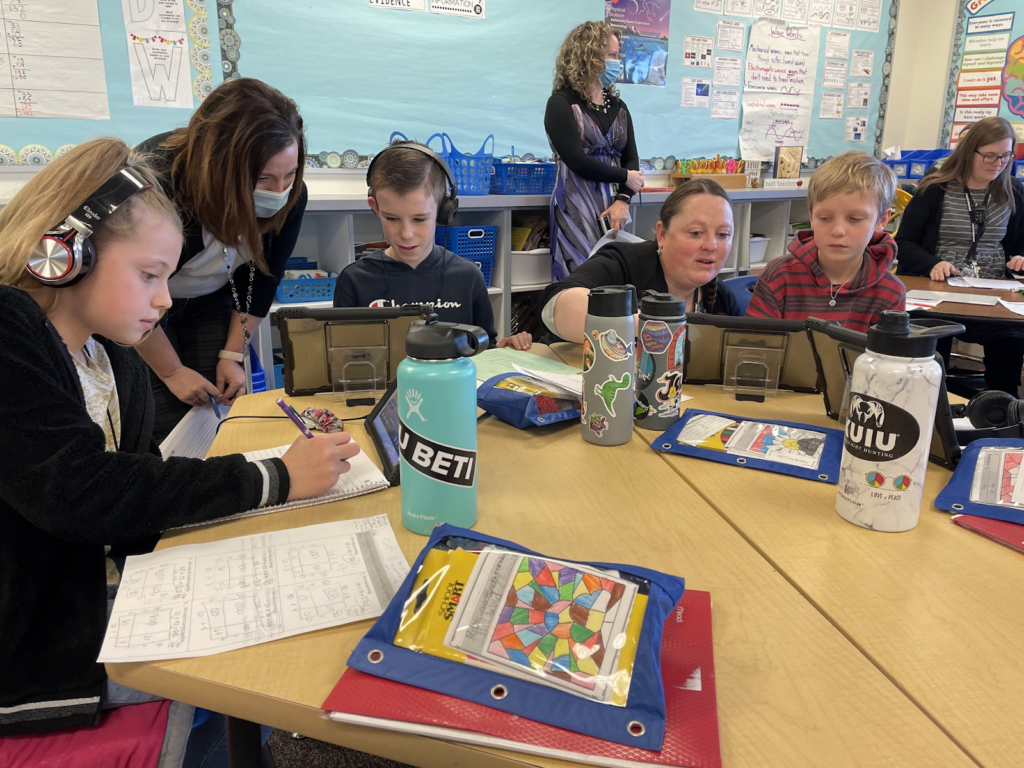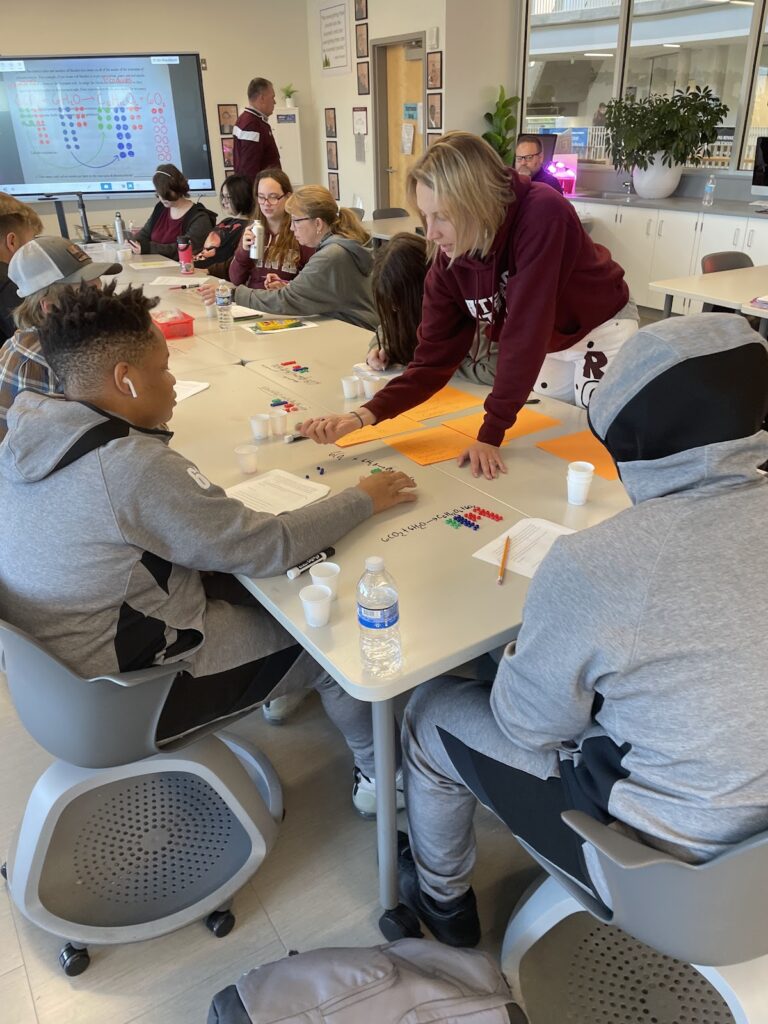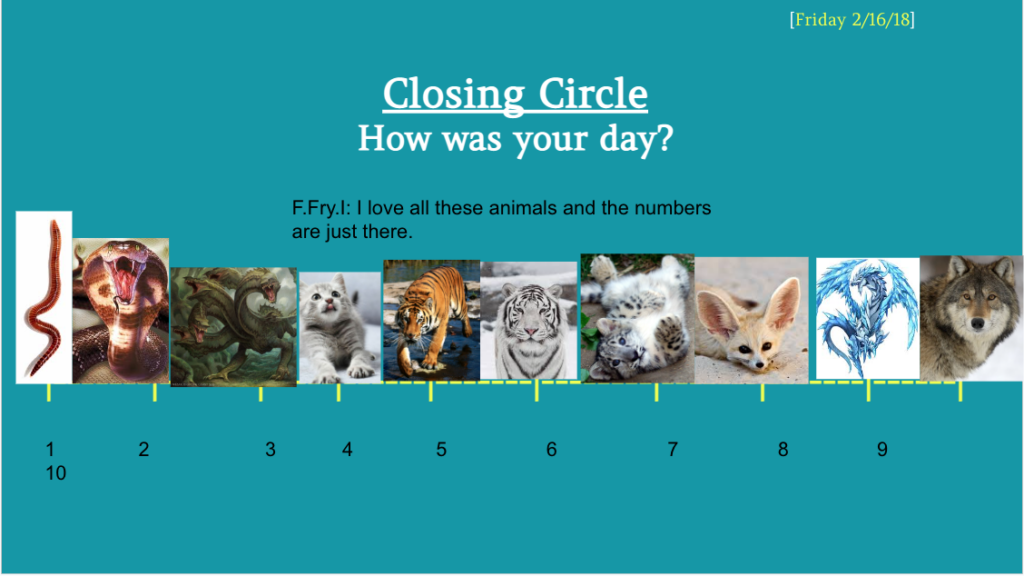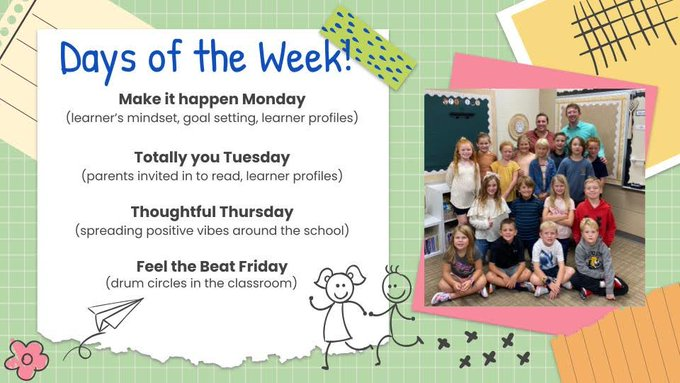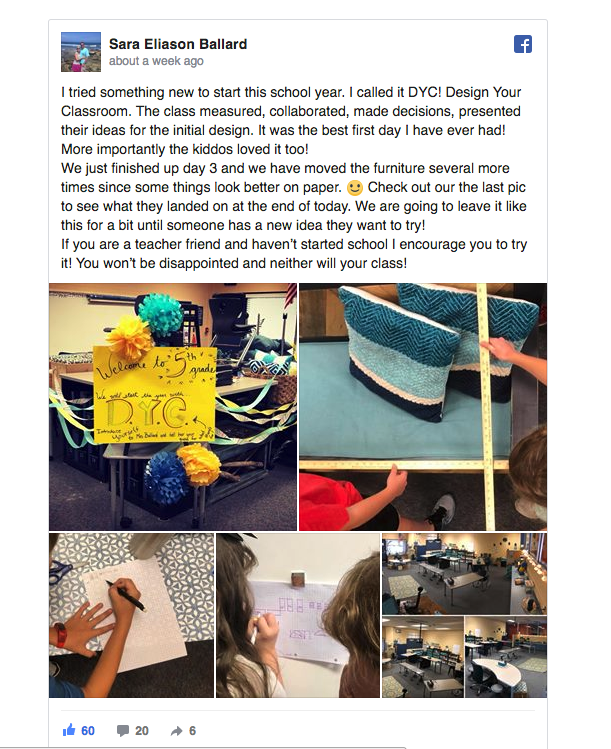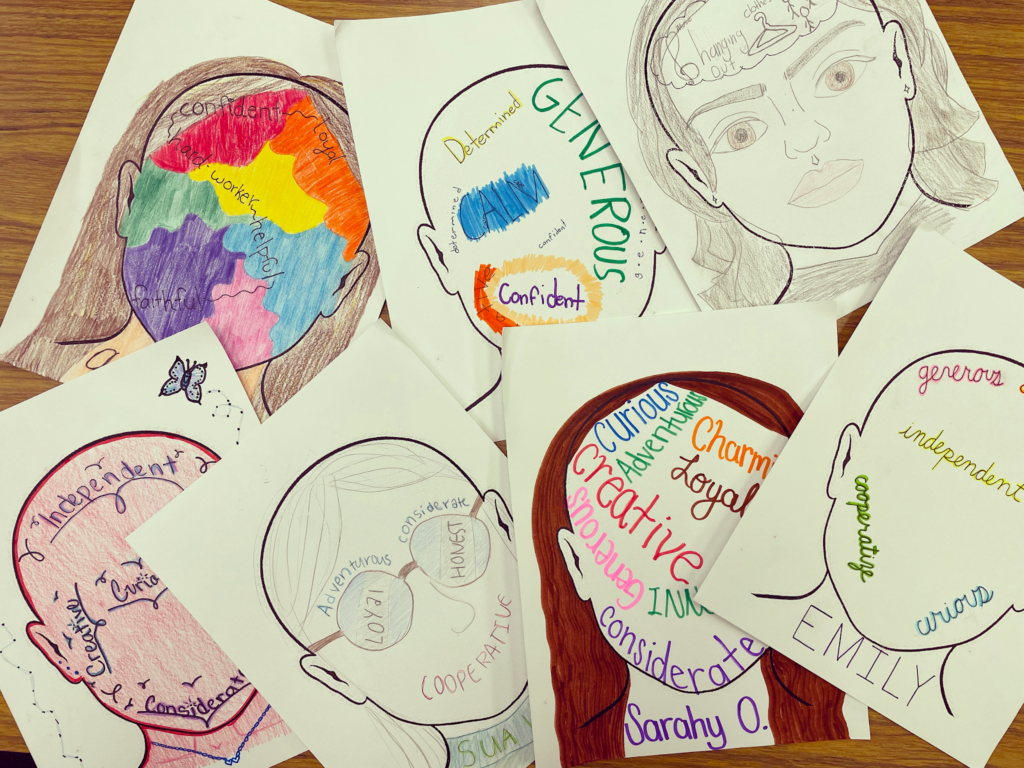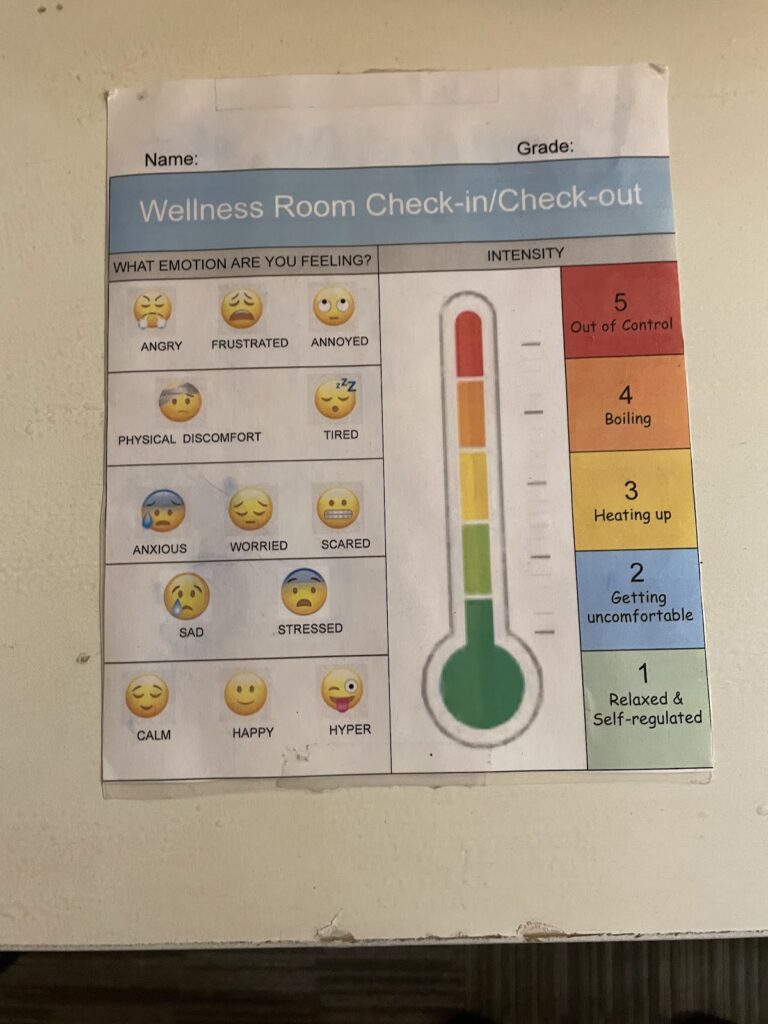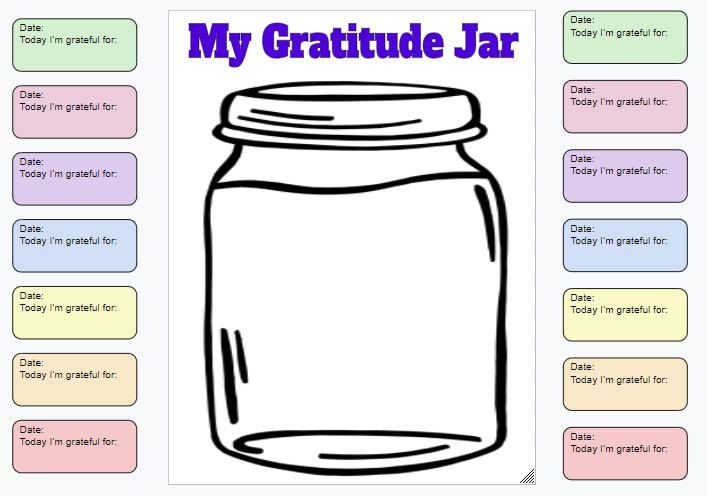Learner-Centered
Learner-Centered Strategies
Learner-centered strategies are actionable steps educators can take to design a learner-centered community and create personalized, competency-based, and authentic learning experiences. Want to go into more depth? Check out our Self-Paced Courses.
Provide Options for Accessibility
Provide Options for Accessibility In a learner-centered environment, all learners, regardless of their ability, will be able to engage meaningfully with the learning experience. Providing options for accessibility can look like adding closed captioning to videos, providing an audio option for readings, ensuring the readability of text based on language needs, providing a translation…
Protocols for Reflection on Learning
Protocols for Reflection on Learning Reflection is a key practice for deeper learning and should happen throughout the learning experience to shift the focus from the product of learning to the process. Reflection protocols, which are sentence starters/stems or specific reflection questions, support learners in learning how to reflect. Bright Spots Gain inspiration from…
Design a Flexible Learning Space
Design a Flexible Learning Space Flexible learning environments are spaces that honor the fact that learning happens both in and outside of the traditional classroom. They also enable opportunities for collaboration and student agency when deciding where and how to learn. A flexible learning environment may be a classroom space set up with desks…
Take Learners into the Real World
Take Learners into the Real World When we prioritize engaging learners in authentic learning experiences and tasks, the entire world becomes our oyster for learning, exploration and reflection! Learning outside the four walls of the classroom can be as simple as stepping outside onto the playground to take measurements for learners’ proposed redesign plans,…
Bring the Real World into the Classroom
Bring the Real World into the Classroom Blurring the boundaries between the classroom and the real world doesn’t only mean physically bringing learners outside the classroom walls. Equally important is bringing the real world into the classroom by connecting students with content experts, community members, or governmental organizations, or by using technology to go on…
Connect Learners to Mentors
Connect Learners to Mentors While your school might not yet have a formal internship or mentorship program, there are still many ways to ensure learners get connected with local community members and with work-based learning experiences to expose them to the ever evolving world of work, and to support them in building essential skills…
Create Learner Jobs
Create Learner Jobs Learners identify classroom leadership roles, creating a sense of accountability for their classroom community. Learners can take on jobs like classroom photographer, greeter (for guests), birthday celebrator, historian, etc. There are so many ways that students can help! Learner jobs create a sense of ownership for the students and empower them…
Provide Learners With Tools to Prioritize Their Time
Provide learners with tools to prioritize their time A powerful way for learners to build their agency and determine priorities, self-management skills that are crucial for learners to build, is for them to plan and prioritize their time. First educators must provide opportunities for learners to do this instead of planning learners’ time for…
Provide goal setting frameworks and tools
Provide goal-setting frameworks and tools Goal-setting is an important life skill and leads to better learning outcomes when done right. Providing tools and frameworks, such as SMART Goals and WOOP Goals, to learners to scaffold their goal-setting and reflecting process has proven to be an effective strategy that leads to long-term goal-setting Bright Spots…
Make Thinking Visible
Make Thinking Visible Metacognition, the ability to think about your thinking and act on that reflection, has been shown to lead to greater learning outcomes and higher learner agency. To start the metacognitive process, educators can make their own thinking visible by thinking out loud and modeling metacognition. They can also provide sentence stems…
Develop Classroom Agreements with Learners
Develop Classroom Agreements with Learners In contrast to the teacher presenting the rules to learners, a collaborative agreement can be created with learners, allowing them to shape their learning community together. Learners feel bought-in because they played a central part in the creation of the agreements. When they see their needs and hopes reflected…
Project-Based Learning
Project-Based Learning Project-based learning is a way to engage learners in meaningful, authentic tasks that develop both content knowledge and 21st century skills. Project-based learning is different from doing a traditional project in that it does not come after the learning but is instead the learning process itself. Learners are presented with or come…
Encourage Retakes & Test Corrections
Encourage Retakes & Test Corrections Encouraging retakes and test corrections provides learners with an opportunity to identify their mistakes, review their work, revisit the content, address misconceptions, and correct their answers. This practice not only helps students improve their grades but also ensures they understand key concepts. Additionally, it builds confidence, motivates continuous learning,…
Co-Create Rubrics with Learners
Co-Create Success Criteria Co-creating rubrics with learners ensures that you clearly share the desired learning outcomes for a learning experience and gives learners ownership over their learning. It not only creates clarity of expectations for the educator but more importantly for the learner who was part of the creation process. Through the process of…
Support Learners in Understanding Themselves
Support Learners in Understanding Themselves In order for learners to make high-quality decisions about their learning and truly be in community, they need to develop a strong sense of self. Who am I? How would I describe myself? What are my strengths? How do I learn best? As educators, we can support this self-discovery…
Passion Projects
Passion Projects Empowering learners to develop the knowledge and skills of your course by exploring their interests is a powerful approach. It can increase student engagement and motivation, it can help students see the relevance and real-world application of what they are learning, and it can provide opportunities for students to develop and showcase…
Create Learner Profiles
Create Learner Profiles Have learners reflect on who they are as learners– their strengths, interests, goals, needs, and how they learn best. These Learner Profiles can help learners become more self-aware, while teachers can use it to adjust learning experiences to leverage each student’s strengths and interests and better meet their needs. Some of…
Provide Choice Boards
Provide Choice Boards Choice boards can take a variety of forms but they are essentially a list of options of learning activities for learners to select from. They can provide choices in what, how, with whom, where or when students learn. Many of them include “must dos” and “may do” options so learners are…
Personalized Learning Strategies
Create Learner Jobs
Create Learner Jobs Learners identify classroom leadership roles, creating a sense of accountability for their classroom community. Learners can take on jobs like classroom photographer, greeter (for guests), birthday celebrator, historian, etc. There are so many ways that students can help! Learner jobs create a sense of ownership for the students and empower them…
Provide Learners With Tools to Prioritize Their Time
Provide learners with tools to prioritize their time A powerful way for learners to build their agency and determine priorities, self-management skills that are crucial for learners to build, is for them to plan and prioritize their time. First educators must provide opportunities for learners to do this instead of planning learners’ time for…
Provide goal setting frameworks and tools
Provide goal-setting frameworks and tools Goal-setting is an important life skill and leads to better learning outcomes when done right. Providing tools and frameworks, such as SMART Goals and WOOP Goals, to learners to scaffold their goal-setting and reflecting process has proven to be an effective strategy that leads to long-term goal-setting Bright Spots…
Make Thinking Visible
Make Thinking Visible Metacognition, the ability to think about your thinking and act on that reflection, has been shown to lead to greater learning outcomes and higher learner agency. To start the metacognitive process, educators can make their own thinking visible by thinking out loud and modeling metacognition. They can also provide sentence stems…
Provide Options for Accessibility
Provide Options for Accessibility In a learner-centered environment, all learners, regardless of their ability, will be able to engage meaningfully with the learning experience. Providing options for accessibility can look like adding closed captioning to videos, providing an audio option for readings, ensuring the readability of text based on language needs, providing a translation…
Support Learner Self-Assessment
Support Learner Self-Assessment Self-assessment is empowering learners to consider where they are in their own learning by intentionally creating transparency of the learning process, and creating a safe space to make mistakes. Self-assessment is often supported by a rubric or other criteria for mastery as well as providing options for communicating needs throughout the…
Provide non-verbal options for participation
Provide Non-Verbal Options for Participation Not all learners are prepared to participate by speaking out loud. Technology can be used to provide polls or virtual chat spaces, such as polleverywhere, mentimeter, and padlet. If you want a low-tech way for students to non-verbally participate, have them write on post-it notes, use hand signals or…
Create Playlists for Learners
Create Playlists for Learners A learning playlist is a sequence of resources and activities designed for students to work through at their own pace in order to achieve the desired learning objectives. Playlists can be used to structure an entire class or just a lesson or unit. Playlists scaffold learners from an introduction to…
Provide Choice Boards
Provide Choice Boards Choice boards can take a variety of forms but they are essentially a list of options of learning activities for learners to select from. They can provide choices in what, how, with whom, where or when students learn. Many of them include “must dos” and “may do” options so learners are…
Create Learner Profiles
Create Learner Profiles Have learners reflect on who they are as learners– their strengths, interests, goals, needs, and how they learn best. These Learner Profiles can help learners become more self-aware, while teachers can use it to adjust learning experiences to leverage each student’s strengths and interests and better meet their needs. Some of…
Authentic Learning Strategies
Protocols for Reflection on Learning
Protocols for Reflection on Learning Reflection is a key practice for deeper learning and should happen throughout the learning experience to shift the focus from the product of learning to the process. Reflection protocols, which are sentence starters/stems or specific reflection questions, support learners in learning how to reflect. Bright Spots Gain inspiration from…
Design a Flexible Learning Space
Design a Flexible Learning Space Flexible learning environments are spaces that honor the fact that learning happens both in and outside of the traditional classroom. They also enable opportunities for collaboration and student agency when deciding where and how to learn. A flexible learning environment may be a classroom space set up with desks…
Take Learners into the Real World
Take Learners into the Real World When we prioritize engaging learners in authentic learning experiences and tasks, the entire world becomes our oyster for learning, exploration and reflection! Learning outside the four walls of the classroom can be as simple as stepping outside onto the playground to take measurements for learners’ proposed redesign plans,…
Bring the Real World into the Classroom
Bring the Real World into the Classroom Blurring the boundaries between the classroom and the real world doesn’t only mean physically bringing learners outside the classroom walls. Equally important is bringing the real world into the classroom by connecting students with content experts, community members, or governmental organizations, or by using technology to go on…
Connect Learners to Mentors
Connect Learners to Mentors While your school might not yet have a formal internship or mentorship program, there are still many ways to ensure learners get connected with local community members and with work-based learning experiences to expose them to the ever evolving world of work, and to support them in building essential skills…
Project-Based Learning
Project-Based Learning Project-based learning is a way to engage learners in meaningful, authentic tasks that develop both content knowledge and 21st century skills. Project-based learning is different from doing a traditional project in that it does not come after the learning but is instead the learning process itself. Learners are presented with or come…
Cooperative Learning Strategies
Leveraging Cooperative Learning Strategies Cooperative learning strategies, often called Kagan strategies, are low-lift and low-risk ways for students to engage with each other while learning. They are structured ways to break up a direct instruction lesson and ask students to collaboratively process information. Bright Spots Gain inspiration from authentic examples of this strategy shared…
Lead Guided Discussions
Lead Guided Discussions Guided discussions are group conversations that use a structured protocol and usually a variety of sentence stems to support learners with the conversation. These build collaboration skills that can be used in larger group projects. Bright Spots Gain inspiration from authentic examples of this strategy shared by teachers who have used…
Strategically Group Learners
Strategically Group Learners for Collaborative Learning Experiences When assigning group work you can assign groups to learners or allow them to choose their own groups. Research has shown motivation is higher when students select their own groups, and many students prefer this method. However, there are benefits to selecting groups: encourages learners to work…
Create Group Roles
Create Group Roles When learners are working in groups, they need to have clear roles and expectations that support the group’s success. In smaller collaborative learning experiences such as a group discussion, those roles may include timekeeper, scribe, reporter, facilitator, etc. In more complex group projects, student roles should be more meaningful, which may…
Competency-Based Learning Strategies
Support Learner Self-Assessment
Support Learner Self-Assessment Self-assessment is empowering learners to consider where they are in their own learning by intentionally creating transparency of the learning process, and creating a safe space to make mistakes. Self-assessment is often supported by a rubric or other criteria for mastery as well as providing options for communicating needs throughout the…
Data Trackers
Use Data Trackers When learners track their own progress, assessment for learning (formative assessment) quickly becomes assessment as learning. Learners figure out where they are in their learning and how they learn best, which is powerful. Ideally, learners track their proficiency in specific skills, standards, or competencies – this can be done on paper or digitally. Be…
Create Playlists for Learners
Create Playlists for Learners A learning playlist is a sequence of resources and activities designed for students to work through at their own pace in order to achieve the desired learning objectives. Playlists can be used to structure an entire class or just a lesson or unit. Playlists scaffold learners from an introduction to…
Co-Create Rubrics with Learners
Co-Create Success Criteria Co-creating rubrics with learners ensures that you clearly share the desired learning outcomes for a learning experience and gives learners ownership over their learning. It not only creates clarity of expectations for the educator but more importantly for the learner who was part of the creation process. Through the process of…
Encourage Retakes & Test Corrections
Encourage Retakes & Test Corrections Encouraging retakes and test corrections provides learners with an opportunity to identify their mistakes, review their work, revisit the content, address misconceptions, and correct their answers. This practice not only helps students improve their grades but also ensures they understand key concepts. Additionally, it builds confidence, motivates continuous learning,…
Provide Peer Feedback Protocols
Provide Peer Feedback Protocols Introduce feedback protocols to students that provide a structure for giving high-quality peer feedback. Example protocols include: Warm & cool feedback 2 stars and 1 wish 1 glow and 1 grow I like, I wish, I wonder Bright Spots Gain inspiration from authentic examples of this strategy shared by teachers…
Using Exit Tickets
Exit Tickets Formative assessment is meant to provide information during the learning process. Exit tickets are a way to know if learners “caught what you taught” by simply asking them a question or two before they leave the class or end a lesson. Ensure that the formative assessments are given with time for you…
Station Rotation
Design Station Rotations Station rotation empowers learners to rotate through different stations or learning activities, each designed to meet their individual needs and learning styles. Ideally, stations include a variety of learning settings: independent, collaborative, and teacher-led (responsive and tailored to the strengths and needs of the group). Learners can rotate through stations in…
Conferencing as an Assessment
Conferencing as a Method of Assessment Teacher-student conferencing is a one-on-one conversation between a teacher and a learner to discuss the learner’s learning progress. It allows teachers and learners to gather information about what learners know and understand, what they are struggling with, and what they need to work on. This information can then…
Learner-Centered Community Learning Strategies
Design a Flexible Learning Space
Design a Flexible Learning Space Flexible learning environments are spaces that honor the fact that learning happens both in and outside of the traditional classroom. They also enable opportunities for collaboration and student agency when deciding where and how to learn. A flexible learning environment may be a classroom space set up with desks…
Host Daily Whole-Class Meetings
Host Daily Whole-Class Meetings Whole-class meetings, often referred to as morning meetings in elementary school, is a dedicated time for the whole class to come together and discuss a variety of topics that are not strictly academic. These can be morning meetings at the beginning of the day, closing circles at the end of…
Do quick and fun check-ins regularly
Do Quick and Fun Check-Ins Regularly Getting to know learners and building relationships can take time but dedicating a little bit of time each day or throughout the day through a variety of small routines and activities can go a long way. Check-in questions can range from silly prompts such as “would you rather?”…
Develop Classroom Agreements with Learners
Develop Classroom Agreements with Learners In contrast to the teacher presenting the rules to learners, a collaborative agreement can be created with learners, allowing them to shape their learning community together. Learners feel bought-in because they played a central part in the creation of the agreements. When they see their needs and hopes reflected…
Let Students Make Decisions in your Classroom
Let Students Make Decisions in your Classroom In addition to making choices about their individual learning, students should be invited to engage in decisions that happen in their classrooms that affect them, their peers, and their educators. These decisions can range from something simple and small such as what music to listen to all…
Create Learner Profiles
Create Learner Profiles Have learners reflect on who they are as learners– their strengths, interests, goals, needs, and how they learn best. These Learner Profiles can help learners become more self-aware, while teachers can use it to adjust learning experiences to leverage each student’s strengths and interests and better meet their needs. Some of…
Support Learners in Understanding Themselves
Support Learners in Understanding Themselves In order for learners to make high-quality decisions about their learning and truly be in community, they need to develop a strong sense of self. Who am I? How would I describe myself? What are my strengths? How do I learn best? As educators, we can support this self-discovery…
Use Art to Get to Know Learners
Use Art to Get to Know Learners Research consistently shows that when students have supportive relationships and feel known at school, learning accelerates. Making consistent, strategic efforts to deeply see and know your students will provide a powerful foundation for learning. Art is a great way to allow students to get to know themselves,…
Teach Self-Regulation Techniques
Teach Self-Regulation Techniques The concept of self-regulation does not just apply to a child’s emotional health; it also influences a child’s cognitive ability. The ability to notice and name feelings and then regulate emotions to be more in control of actions is a critical foundation for learning. Bright Spots Gain inspiration from authentic examples…
Nurture Gratitude
Nurture Gratitude Gratitude is a powerful tool for teachers—both for personal and classroom applications. It can be used to help establish a healthy classroom culture as it increases feelings of optimism and joy, decreases anxiety and depression, and helps students feel more connected to their community. Grateful people have been found to experience less…
